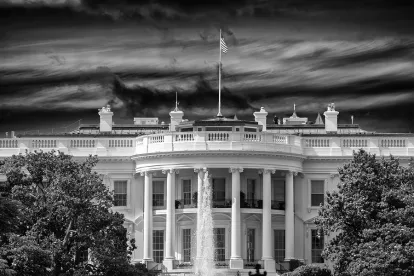On April 2, 2020, the President again invoked the authority of the Defense Production Act of 1950 (DPA) in the fight against the COVID-19 pandemic, by issuing a “Memorandum for the Secretary of Health and Human Services and the Secretary of Homeland Security.” This Memorandum, like the previous Presidential Memorandum regarding General Motors, relates to the production of ventilators, which are sorely needed to combat the spread of COVID-19.
The President’s April 2 Memorandum provides the following directive to the Secretary of Health and Human Services (HHS), to whom the President previously delegated the authority to set priorities and allocations for health and medical resources in the current crisis:
The Secretary [of HHS], in consultation with the Secretary of Homeland Security, shall use any and all authority available under the [DPA] to facilitate the supply of materials to the appropriate subsidiary or affiliate of the following entities for the production of ventilators: General Electric Company; Hill-Rom Holdings, Inc.; Medtronic Public Limited Company; ResMed Inc.; Royal Philips N.V.; and Vyaire Medical, Inc.
In short, the most recent Memorandum directs HHS to use its authority under the DPA to ensure that the companies now producing, or expected to produce, ventilators will have adequate supply chains to meet their demands.[1]
But what does this mean for the companies involved, especially those in the supply chains of the listed companies?
First, as previously discussed here, this does not mean that companies can be ordered to manufacture products that they are not now producing.
Second, the Health Resources Priority and Allocation System (HRPAS), codified in 45 C.F.R. Part 101, already provides that, where the government issues a “priority” order, the company receiving the order must issue priority orders to its suppliers, and those suppliers, in turn, must accept the priority orders (when capable) and flow the priority ratings down through their own supply chains. See 45 C.F.R. § 101.35. Thus, by operation of existing regulations, if HHS were to issue priority purchase orders to the companies listed in the President’s April 2 Memorandum, those companies would be required to flow the priority ratings down through their supply chains, requiring all those in the supply chain to provide their parts on an expedited basis.
Third, to the extent that certain suppliers are providing critical parts to more than one ventilator manufacturer—which seems likely since Medtronic recently made public the design and production specifications for its ventilators—HHS has the authority under the DPA to issue allocation directives to ensure that parts are distributed in a manner that benefits the national objective to produce the greatest number of ventilators. See 45 C.F.R. Part 101, Subpart E. Such authority also may be needed to deconflict priority rated orders that critical suppliers receive from multiple manufacturers.
In sum, to best effectuate the President’s April 2 Memorandum, HHS is likely to issue priority purchase orders to the companies listed in the Memorandum—if it has not done so already—and thereby cause those companies to flow the priority orders down through the entirety of their supply chains. This would mean, of course, that the federal government itself will purchase the sought-after ventilators, and thereby be in a position to redistribute them to the States, in a manner similar to its current distribution of stockpiled strategic supplies. Last, it can be expected that HHS will have to deconflict priority orders issued to critical sub-tier suppliers, thereby coordinating the overall manufacture of ventilators in a manner intended to maximize national production.
[1] Notably, the President’s April 2 Memorandum does not include General Motors (GM), thereby suggesting the government will not give priority orders to GM for ventilators.




 />i
/>i

